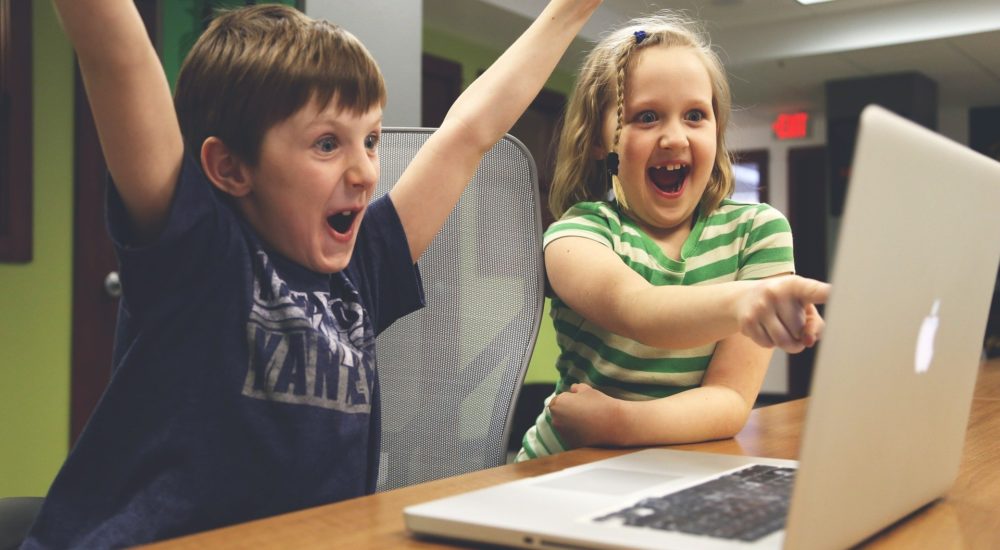Social and emotional learning is a set of teachable competencies or skills considered fundamental to school and life success. The Collaborative for Academic, Social, and Emotional Learning (CASEL) defines SEL as the process of how children “acquire and apply the knowledge, skills, and attitudes to develop healthy identities, manage emotions and achieve personal and collective goals, feel and show empathy for others, establish and maintain supportive relationships, and make responsible and caring decisions.”
Fred Rogers, the genial host of Mister Rogers’ Neighborhood, is considered by many to be the father of social and emotional learning. In a report titled, Carrying Fred Rogers’ Message Forward In The Digital Age, Rogers’ lessons from educational television are carried to educational technologies, from games to other playful digital technologies. In it, Rogers’ Six Principles of Learning Readiness are shared. According to Rogers, to be ready to learn, children must have:
- A sense of self-worth,
- A sense of trust,
- Curiosity,
- Capacity to look and listen carefully,
- Capacity to play, and
- Times of solitude.
The legacy of Rogers’s Six Principles lives on in emotional check-in tools, like the SEL templates on Pear Deck. Using these, students can report to teachers how they feel on any given day. More details about each Principle can be found here: http://bit.do/fPiH9.
CASEL board member and Permission to Feel author Mark Brackett suggests that emotional identification should be the starting point for any SEL skill acquisition. He helped develop the Mood Meter app, a check-in tool that can empower children (and adults!) to become “emotion scientists.” The Mood Meter has four color-coded quadrants that include dozens of moods connected to energy levels. Red is where high energy unpleasantness reside; comparatively, yellow moods are pleasant but high energy. Blue describes unpleasant low energy, and green are pleasant low energy moods. As this video explains, teachers can align activities to the Mood Meter:
Teachers can create Choice Boards for students that are labeled and color-coded to the Mood Meter. Once students become emotion scientists, they can further their self-awareness by having agency to select activities differentiated and aligned to their moods. Students who are in the yellow zone can be guided to creative problem-solving activities. They can brainstorm on Padlet or Google Jamboard or can create on Minecraft. Children who are in the red can harness their moods by engaging in competitive activities, like classroom debates. They can be guided to build argumentation skills by playing competitive video games, too. Children in the blue may be in the mindset for inquiry-based lessons or empathy-based activities. Lastly, students in the green students can be guided to activities like journaling.
Creating Mood Meter-aligned Choice Boards is, in fact, an easy step towards gamifying SEL. It can promote a sense of autonomy, competence, and relatedness, the three components of self-determination theory, innate human needs that can lead to human flourishing. Good games do this, as players feel agency over experiences that feel just within grasp. By planning lessons that afford self-determination theory, a sense of well-being can be engendered, creating happier classrooms for all!
Games can enable children to practice emotions in spaces that are free from actualized consequences. With thoughtful guidance, games can help children manage emotions, perspective-take, demonstrate empathic concern, and exhibit prosocial behaviors. In my new book, Gaming SEL: Games as Transformational to Social and Emotional Learning, I share emerging research that suggests how these competencies are, in fact, teachable. But games themselves cannot be responsible for children’s learning. Having a supportive educator or caregiver guiding experiences can be crucial.
Last year, I had the opportunity to co-author the chapter “Leveraging Technology for SEL Programs” in the open-access UNESCO Mahatma Gandhi Institute of Education for Peace and Sustainable Development (MGIEP) publication, Rethinking Learning: A Review of Social and Emotional Learning for Education Systems. Written with Susan Rivers, CEO and chief scientist at iThrive Games—a nonprofit that intentionally uses and designs games to support teen voice while engaging teens through play and design—we explored how playful technologies cultivate SEL skills. The iThrive website shares lots of content, as well as kits and guides on playing and making games on SEL themes, like growth mindset, cooperation, kindness, and gratitude. We shared these resources in our UNESCO MGIEP chapter, as well as how powerful digital tools can drive practices that develop and strengthen social and emotional competencies, including self-awareness, self-management, social awareness, relationship skills, and responsible decision-making. Check out the publication—plus additional free resources—here: https://mgiep.unesco.org/rethinking-learning.
For breakfast, I had a keto muffin, egg whites, and turkey bacon. And coffee. Lots of coffee!
Author: @drfarber
